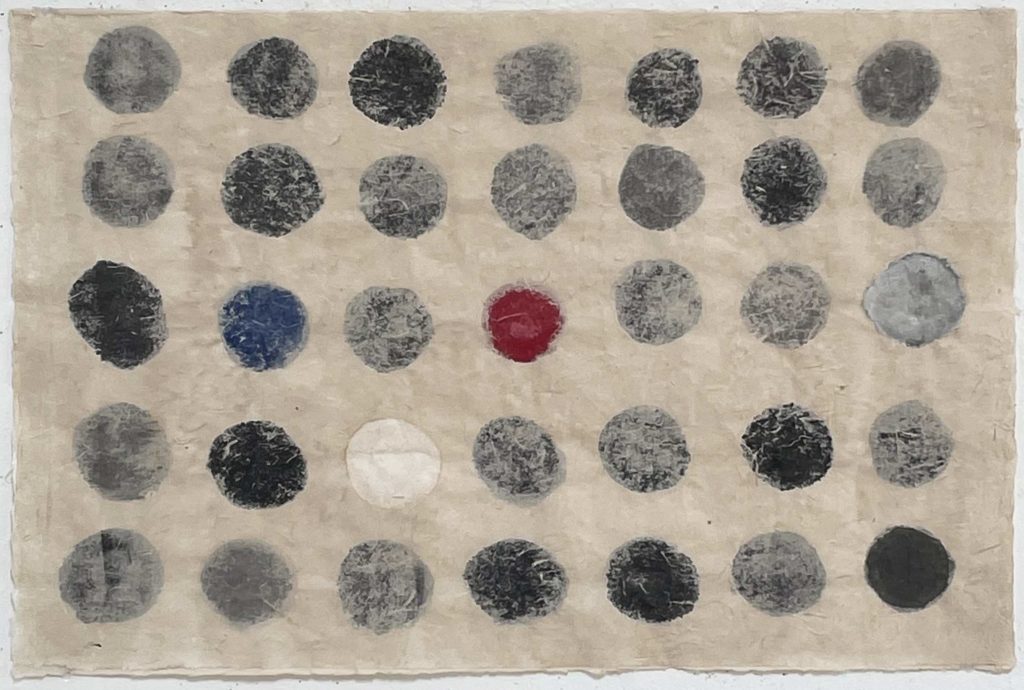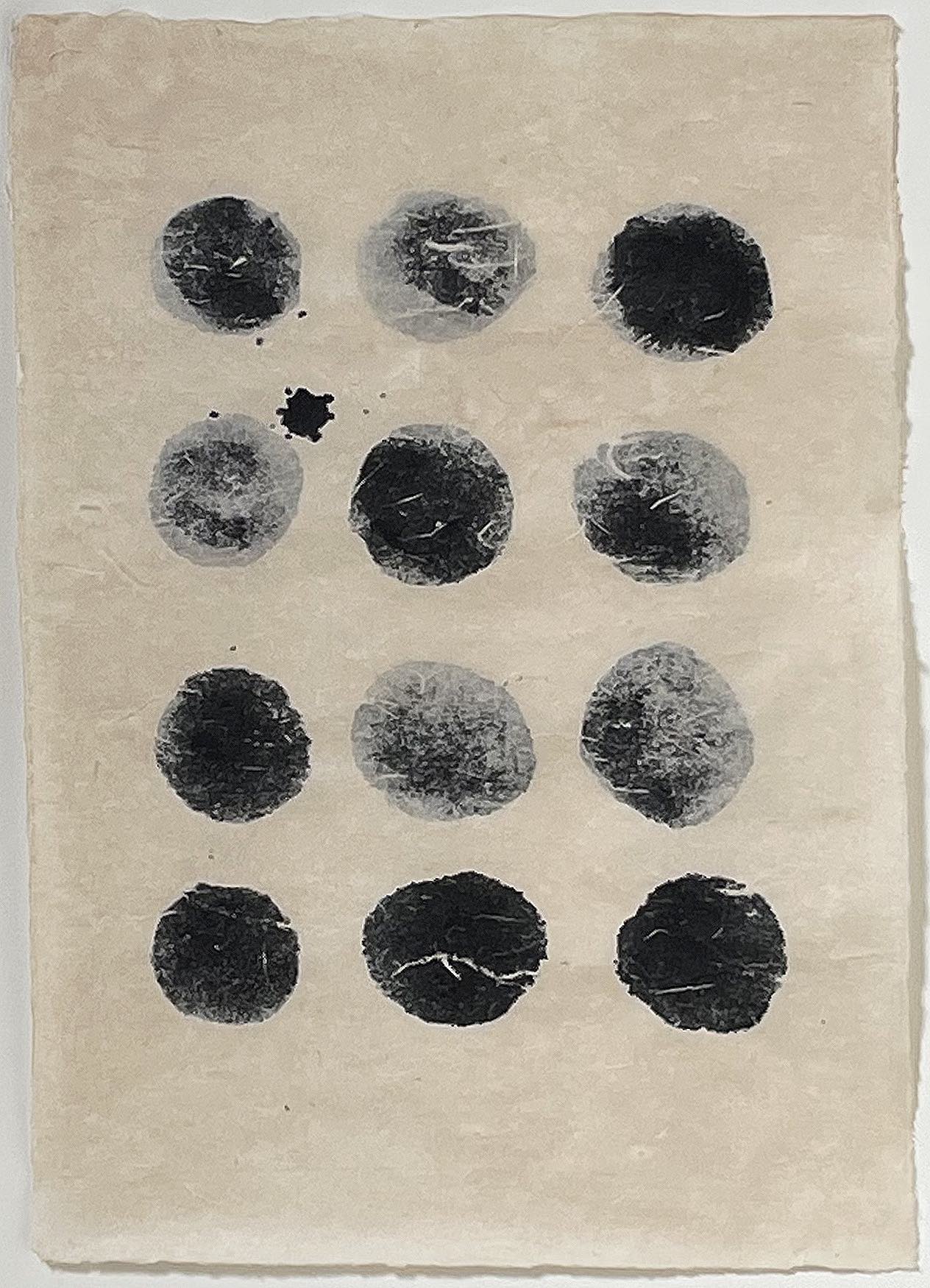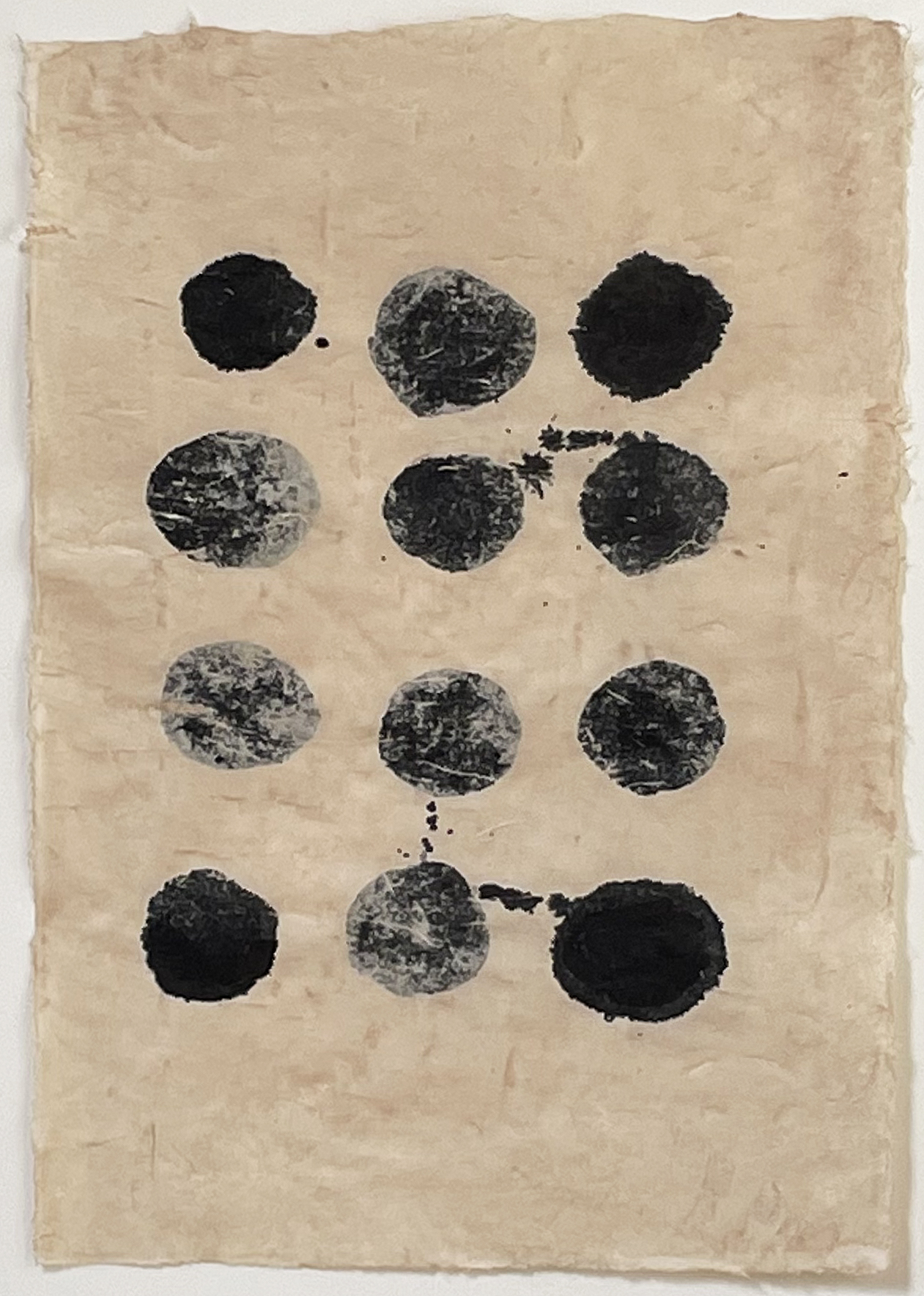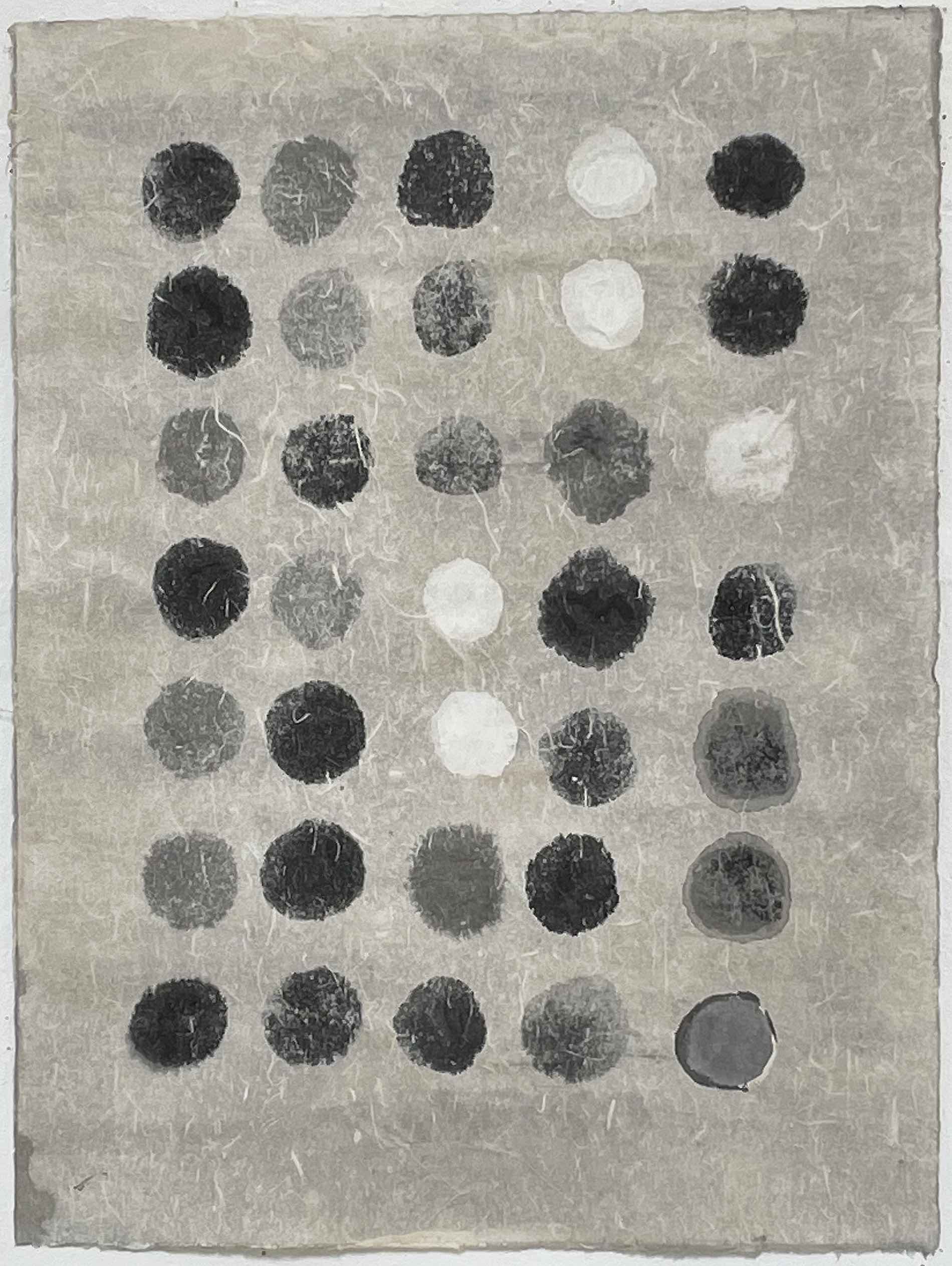
“I have thought a great deal about the Buddhist concept that form is emptiness, emptiness is form,” says Berkeley-based artist Janine Brown. “Many people have used many words to describe that place. To me, there are no words, one can only look into it within themselves.” In her Sutra series, Brown paints dots in slightly askew rows and columns across roughhewn paper—nothing is perfectly aligned, but our eyes still find rhythm in each composition. “I’d like the viewer to just to sit with my work,” she says. “Take time. Allow it to speak to you. You do not need to know anything.”
The meditative aspect of Brown’s art is embodied in the unpredictability of how her paintings will turn out. She approaches each piece without preconceptions, simply diluting the black Japanese ink known as sumi and walnut ink, and starting with small circles and spiraling them outward on mulberry paper, the fibers of which react differently to each mixture of ink. “I do not know exactly how transparent the ink will be until it dries,” Brown says. “The obstacles, awkwardnesses, surprises, adaptations, and mysteries reflect the passage of the period of time I work on each series.” Her work evokes how each of us negotiates the chaos of daily life, and it reminds us to slow down and appreciate the space in between the movement. “It is a challenge to pursue this simplicity while experiencing the physical challenges of aging,” Brown says, “and of course the major challenges we all face in coping with the stressful chaos of our rapidly changing world.”




